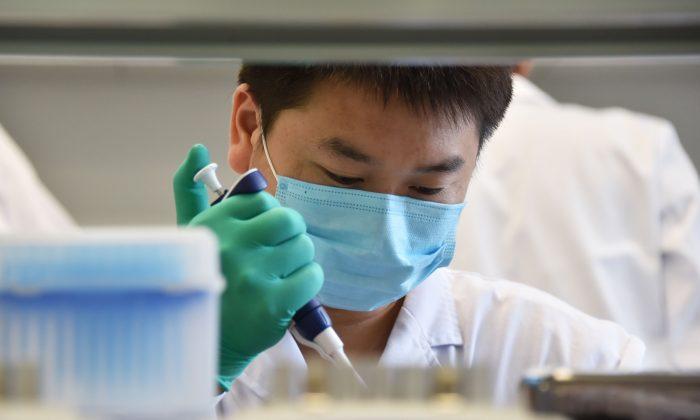To this, we may now have to add a fourth magic weapon: DNA.
Like the other three, this fourth magic weapon is deployed not only domestically, but internationally, as well. That is to say, China is not only collecting, analyzing, and storing the DNA of massive numbers of its own citizens; it’s collecting the DNA of many other peoples from around the world, including millions of Americans (this will be explored further in the forthcoming second part of this series).
The China program alone is breathtaking in its scope and seems designed to encompass the country’s entire population—currently some 1.4 billion people—over time. There are a number of DNA collection projects that have already been completed, while others are currently underway. For example, there is a national DNA collection project focused exclusively on men, another regional project targeted on “troublesome” minorities like the Uyghurs and Kazakhs, and still others focused on the general population.
We know a lot about the DNA project targeting men, because The Epoch Times recently obtained a copy of the Ministry of Public Security directive that established it. Issued on Nov. 7, 2017, the internal document announced the establishment of a “National Y-STR DNA Criminal Investigation and Information Database.” STR stands for “short tandem repeat,” or small units of repeated DNA sequences, on the Y-chromosome. The directive also described, in great detail, how to collect, analyze, and store Y-chromosome DNA data from millions of men.
Because the Y chromosome—found only in men—is passed down from father to son virtually unchanged, the Y chromosome in any group of closely related men is nearly identical. That’s why the first step in the DNA collection process of the program at the village and town level is the creation of a genealogy. Officials are instructed to draw up a family tree for every family in the community they survey. Once every independent male line has been identified, one or more of the men in it are required to give a blood sample for analysis.
The (evil) genius of the Y DNA database thus created is this: Any male DNA gathered in the course of an investigation can immediately be traced back to a small group of related men. At that point, it will be relatively easy for Ministry of Public Security investigators to identify the exact man that the state wants to question, arrest, imprison, or execute. Given the enormous utility of the database from the point of view of the state, it’s perhaps no surprise that it has been fast-tracked. The directive called for it to be completed and in operation by the end of 2019.
It is important to understand that the focus of China’s Y DNA program—or any one of its other DNA collection programs, for that matter—is not merely crime solving. In the United States, because the DNA database is used exclusively for fighting crime, DNA is gathered only from criminals and those suspected of a crime. Not so in China, where DNA is gathered from tens of millions of people who are innocent of any wrongdoing, and where the DNA database that is being constructed is conceived of as a tool for controlling dissent.
One final point about those whose Y DNA will be collected for the database. Aside from the general male population (who are euphemistically called “people who voluntarily provide DNA”), the directive also mandated that samples be collected from all those under arrest, detention, or criminal investigation. This is more or less in line with international practice. But then, the directive ordered all policemen and detectives, and all government personnel involved in health and social programs, to provide DNA samples as well. In other words, the Party is taking advantage of its nationwide Y DNA program to gather genetic material from those men who enforce its policies on the wider population.
The Journal report revealed that the PRC police use almost every encounter with the public as an opportunity to collect DNA samples. Among those required to give a saliva or blood sample include those who have criticized the Party on Weibo, a popular social-media platform similar to Twitter, or who have forgotten to carry their identification card. Also targeted are members of groups that the police believe “endanger social stability,” such as migrant workers, coal miners, and apartment renters. Note that none of those targeted have been accused of having committed a crime, and that none of these pretexts for DNA collection would be allowed in the United States.
As a result of these ongoing DNA collection efforts, an estimated 100 million DNA samples have been collected, analyzed, and added to the government’s huge database. Millions more are being added each month. By way of comparison, the FBI currently has DNA data for 13 million convicted persons and DNA data for 3 million arrested persons.
The iron curtain that is descending upon the Chinese people is chilling enough, but what should make every American sit up and take notice is that American companies have been—largely unwittingly—enabling China’s rise as a digital totalitarian state. And that China is assembling a huge DNA database for people outside of China as well, a database that includes the private DNA code of millions of Americans.





